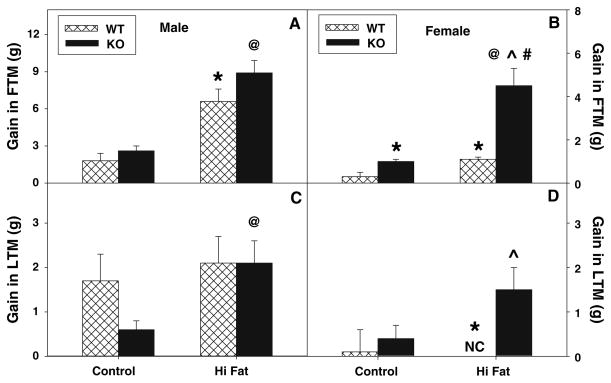Fig. 3.
Effect of L-FABP gene ablation and high-fat diet on whole body phenotype: Gain and percent gain in fat tissue mass (FTM) and lean tissue mass (LTM). At the beginning and end of the 12-week dietary study, FTM and LTM was determined by dual emission X-ray absorptiometry (DEXA) in male and female WT (hatched bar) and L-FABP KO (solid bar) mice fed control- and high-fat diets as described in “Materials and Methods”. Changes in initial and final FTM (a, b) and LTM (c, d) for male (a, c) and female (b, d) WT and L-FABP KO mice were reported as gain in respective tissue mass. Values represent the mean ± sem, n = 5–7. Statistical analysis was as follows: * p ≤ 0.02 versus WT mice on control-diet; @ p ≤ 0.02 versus L-FABP KO mice on control-diet; ^ p ≤ 0.006 versus WT mice on high-fat diet; and # p ≤ 0.001 versus male L-FABP KO mice on high-fat diet

